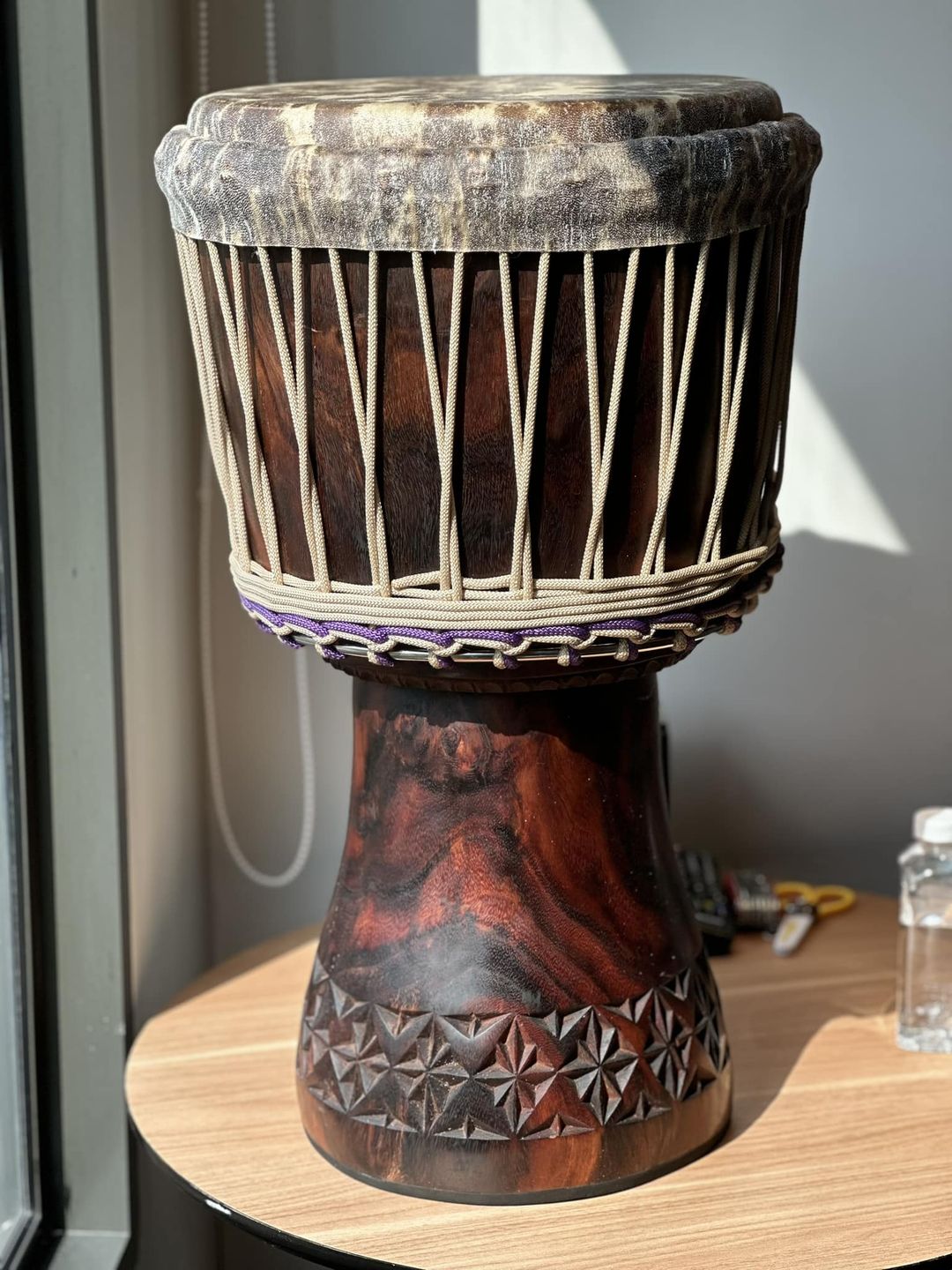It’s fascinating to see how much the djembe has evolved over the years, particularly with the influence of European styles and the blend of modern and classic designs. While I personally lean towards the traditional playing styles, I must say that the craftsmanship, shape, and finish of these contemporary drums created by various builders are truly impressive.
Many people may not realize that the djembe we recognize today has been shaped significantly by external influences. For example, the metal ring used for tuning was once made from rope. The decorative carving technique known as “chip carving” was introduced to the djembe through European methods, as brought over by an American.
Additionally, the ropes used now are not sourced from West Africa, and some argue that the tuning system was developed or even invented by Chief Bay, an American from New York. Born James Hawthorne in Yemassee, South Carolina, he eventually moved with his family to Brooklyn and later to Harlem, where he honed his skills playing drums and singing in church choirs.
This evolution has resulted in what we can consider a hybrid drum. Earlier versions of the djembe utilized simpler tuning methods, were generally smaller and lighter, and were not tuned as high as those we hear today. In the last three decades, the tonality, skin tightness, and thickness of the drums have increased significantly.
If you watch vintage videos or listen to recordings from the 1970s and 1980s, you’ll notice that the rhythms are slower, the drums are tuned lower, and there is a greater use of space in the music. Although there were rapid rolls and fast patterns, they were not the predominant focus.
As music transitioned from village life to urban settings, it evolved into a fused style suitable for performance groups, which we now refer to as ballet style. Rhythms became quicker, and dance was adapted to create a more exciting and visually engaging experience. The influence of gymnasts from China and Guinea introduced acrobatics into the performance, transforming traditional celebrations—like marriage ceremonies or harvest festivals—into spectacular shows.
To achieve faster rhythms and enhance the dynamics of the performance, drummers tighten the skin of their drums. It’s much harder to execute rapid rolls on a lower-tuned instrument. The brighter and more explosive the sound, the better it cuts through the music. Most of the djembe teachers you’ll find in the U.S. have a background in performance, with a few exceptions like Namory Keita. As a result, many students are learning what is often referred to as ballet style, rather than the village style originating from Mali. Both styles still exist and are taught, but many students may not realize they are practicing a homogenized version and may not fully understand its roots.

